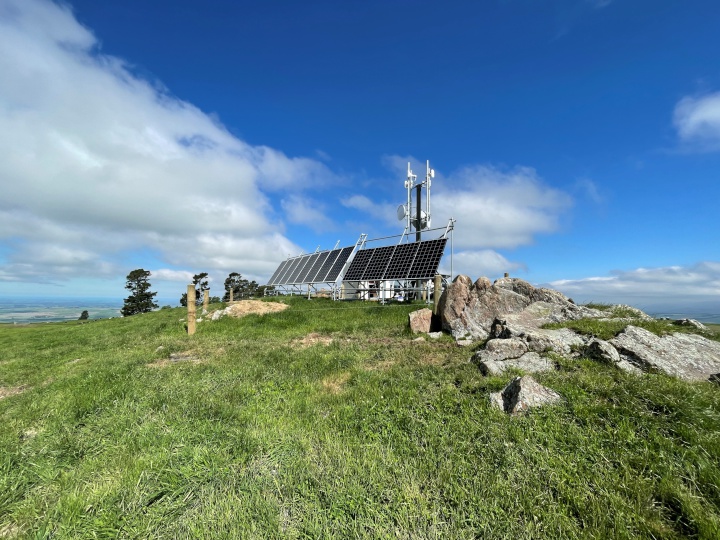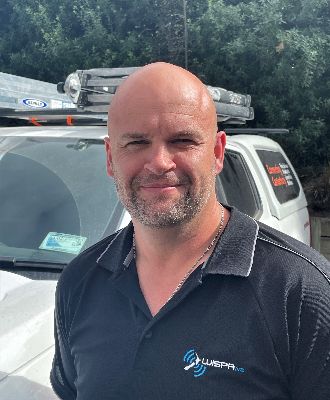Going The Distance
Getting fast broadband to rural areas of New Zealand is the last great challenge for the country’s Internet network.
Former Prime Minister Sir John Key said last week one of the top achievements of his time in government was Ultra-Fast Broadband. The roll-out of fibre arrived in time to be a vital help for communities during Covid lockdowns and is now an essential service for all kinds of social and economic reasons.

But he said he was concerned about the rural/urban divide with a number of people unable to get access to fibre Internet.
Luckily there is already a solution for many rural properties as New Zealand’s wireless internet providers, or WISPS, are working to link users with quality broadband and which have been building their own networks to do this.
Mike Smith, the head of WISPA NZ which represents wireless providers, says a lot of this work is being done as part of the Crown Infrastructure Partners’ Rural Broadband Initiative project which aims to improve access to 84,000 rural homes and businesses.
He says many of its members are getting quality broadband to the most isolated of places.
“Wireless internet providers, or regional telecommunications providers, are delivering high quality broadband services to over 75,000 homes and businesses throughout regional New Zealand,” he says.
“Fibre expansion is critical to extending Ultra-Fast connectivity to regional New Zealand, particularly by providing capacity to the wireless networks that WISPs operate.
“These wireless networks are the backbone of rural New Zealand's connectivity, often providing much-needed high speed broadband and services where others cannot.”
Ms Smith knows the sector well, being the founder of Ultimate Broadband (UBB), a wireless provider in Canterbury.

He says as fibre moves further into the regions, WISPS can increase the capacity of their services which means faster broadband connectivity for the regions.
“It has a massive flow-on effect for rural New Zealand.”
He says WISPS offer a full range of services beyond their wireless infrastructure. For example, many WISPS are already investing in their own fibre networks to expand past the current UFB or rural fibre footprint.
“A regional focus and a can-do attitude go a long way to making these things happen. And with the experience of building wireless infrastructure throughout the regions, often working with local farmers in their communities, deploying fibre is a logical extension of what WISPs can offer.
“WISPA NZ, alongside TUANZ and many rural-focused groups, has been pushing for a 10-year plan for broadband connectivity to ensure regional New Zealand is not left behind. This calls for industry and Government to work together to ensure more investment gets the desired outcomes.
"It’s really important to remember that there is no single solution that will close the connectivity gap - instead a mixture of solutions is required that together will ensure there is equality between urban and rural connectivity."
Mike Smith says WISPA welcomes more discussion on closing the connectivity gap and is always keen to hear ideas of how to do this.
For more information go to:
www.wispa.nz/


 Greenpeace: Taranaki - Greenpeace Activists Stop Unloading Of Palm Kernel Sourced From Indonesian Rainforests
Greenpeace: Taranaki - Greenpeace Activists Stop Unloading Of Palm Kernel Sourced From Indonesian Rainforests Seafood New Zealand: Seafood Situation Saved By A Sausage - New Plymouth Locals Innovate, Using Crayfish Bait
Seafood New Zealand: Seafood Situation Saved By A Sausage - New Plymouth Locals Innovate, Using Crayfish Bait Takeovers Panel: Takeovers Panel Convenes Meeting To Inquire Into The Acquisition Of Shares In NZME Limited
Takeovers Panel: Takeovers Panel Convenes Meeting To Inquire Into The Acquisition Of Shares In NZME Limited WorkSafe NZ: Conveyor Belt Death-Trap Was A Danger In Plain Sight
WorkSafe NZ: Conveyor Belt Death-Trap Was A Danger In Plain Sight Commerce Commission: 2degrees Fined $325,000 For Misleading Claims About ‘Free’ Aussie Business Roaming
Commerce Commission: 2degrees Fined $325,000 For Misleading Claims About ‘Free’ Aussie Business Roaming  Natural Hazards Commission: Hub Launched To Empower Architects And Engineers To Build Above Code
Natural Hazards Commission: Hub Launched To Empower Architects And Engineers To Build Above Code



